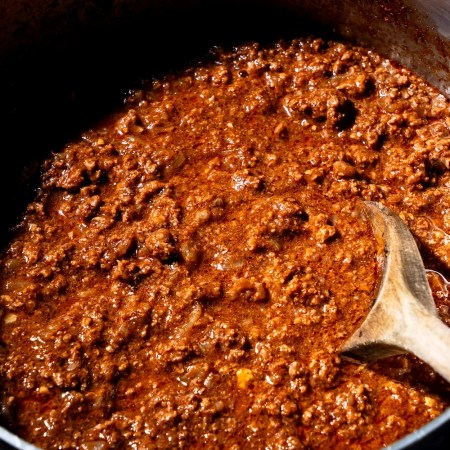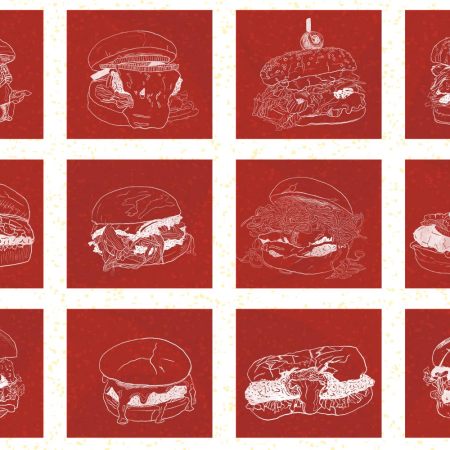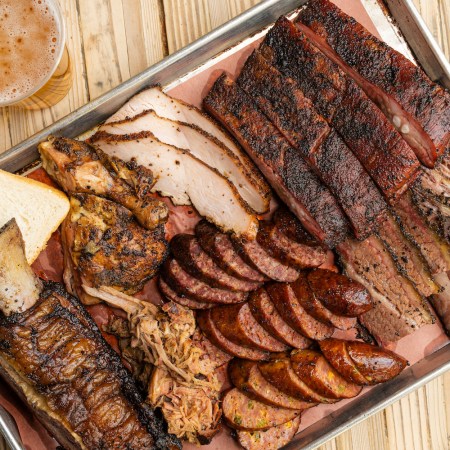This story is part of our Dog Days Survival Guide, a collection of essays, recommendations and how-tos to help you get through the hottest days of the year.
“Laws, like sausages, cease to inspire respect in proportion as we know how they are made,” lawyer-poet John Godfrey Saxe is believed to have said in 1869 while discussing an impeachment.
While there’s some debate as to whether it was Saxe or Otto von Bismarck who said it, the statement implies that, upon learning what goes into a sausage, you may no longer want to eat it. We’re here, along with James Peisker, a co-founder of Nashville-based butcher shop Porter Road, to help dissuade you from that notion as you crank up your grill for the final weeks of summer.
Below, Peisker breaks down the differences between the sausages you’ll find at high-quality meat purveyors like Porter Road versus your local supermarket, and also offers up some tips on the best ways to prepare ’em.
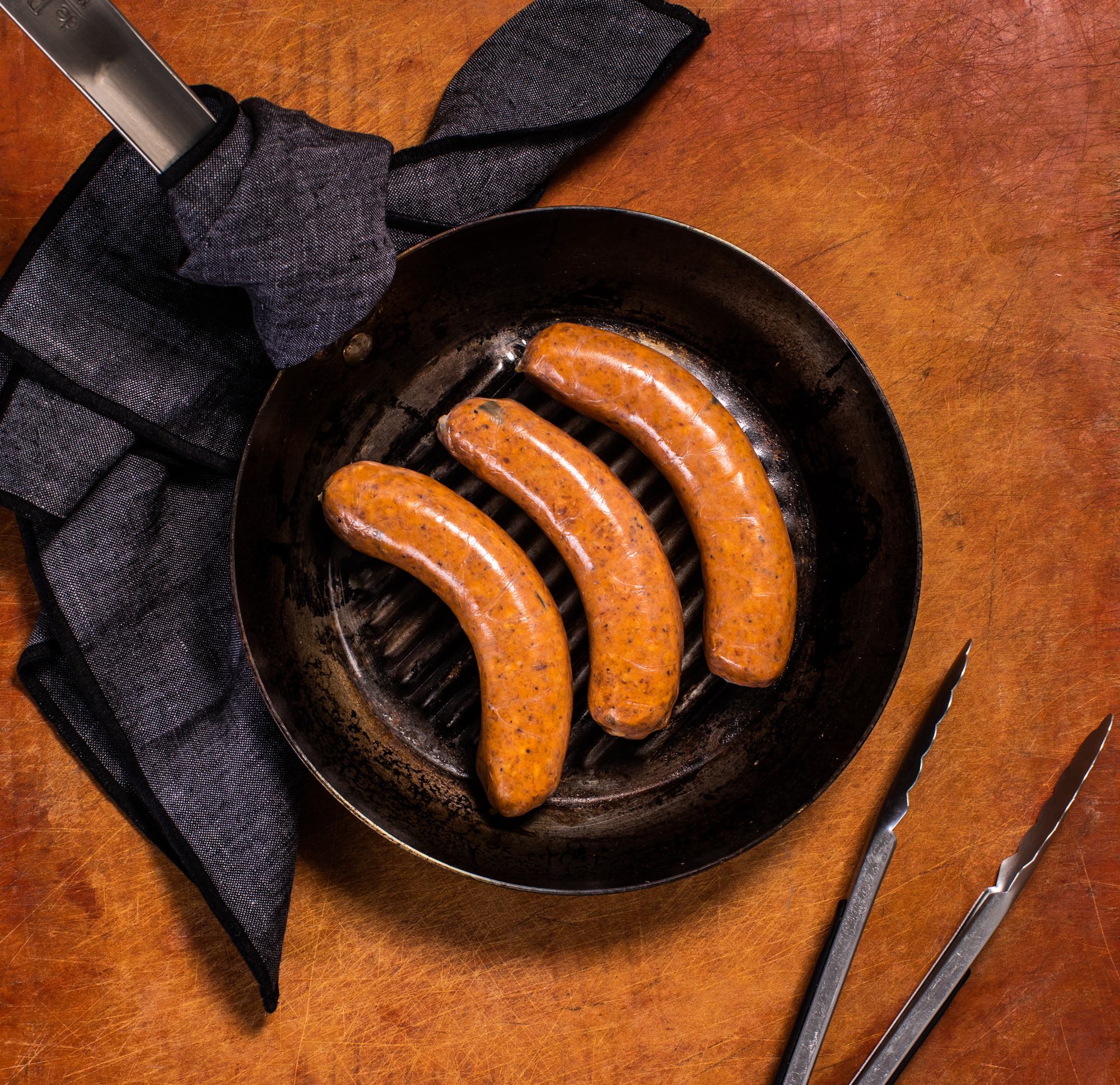
First off, besides delicious, what exactly is a sausage?
“Sausage is just a general term for a forcemeat, which is meat that is emulsified together, usually with seasonings and flavorings,” Peisker says. “Sometimes it’s stuffed into a casing and sometimes it’s just patted out. So, really, sausage could be as simple as chopped up meat with salt added to it and bound together, if you can do it in the right way and it becomes emulsified. I keep on saying emulsified, which is when you take two things that don’t like each other and force them together.”
What two things are we talking about?
“In this case, we’re forcing water and oil together — the natural fat and the water found in the meat,” Peisker says. “By emulsifying it, that’s when you get a really juicy, delicious sausage. If your emulsification is broken, then you get a dry crumbly sausage. Scraps, bits and pieces will get saved, mixed with some sort of seasoning and ground together. We use nice bits like pork chop trimmings, pork butt trimmings or ham trimmings. Some places use meat that is air-blasted off the bone. We prefer to use a more traditional method and just use meat and fat. And then we emulsify it by using the grinder and controlling the temperature. We make sure our meat is below 50 degrees and that our grinder is sharp and put together correctly, so that way we don’t cause friction.”
What’s the scariest part of making sausage?
“The scariest part of making sausage at Porter Road is thinking about what other people put in their sausages,” Peisker says. “Ours are made from quality trims from our pastured animals. Joking aside, as a perfectionist, making sure you do not break the emulsification is the scariest part. A broken sausage isnt a good time. Also, the thought of stuffing an animal back inside itself is quite a scary thought. That’s basically what a sausage is.”
Are there seasonings that are typically used?
“Salt helps break down some of the proteins with the emulsification process and makes the sausage taste better, because salt naturally makes things less bitter and brings up a natural sweetness in the meat,” Peisker says. “Black pepper helps with spoilage and also makes it taste good. Sometimes garlic, which naturally contains something called lecithin, is added, which helps with emulsification as well. A lot of these seasonings make the sausage taste delicious but also have [structural] reasons why they were added to begin with.”
How do the types of casings differ?
“So you have a natural casing or a synthetic casing. Reputable sources use a natural casing for multiple reasons, but most commercial places will use a synthetic casing. Some will even cook it and remove the casing afterward, like with most hot dogs or breakfast links. Those are stuffed into a collagen casing, smoked and then that casing is cut off and they’re packaged.” Peisker says. “Generally, the sausage at your grocery store is going to have that synthetic casing. They’re hard to get a nice snap to, the ends don’t twist out that well and they’re just more of a difficult process, but they do work well and it’s synthetic, so it’s less expensive.”
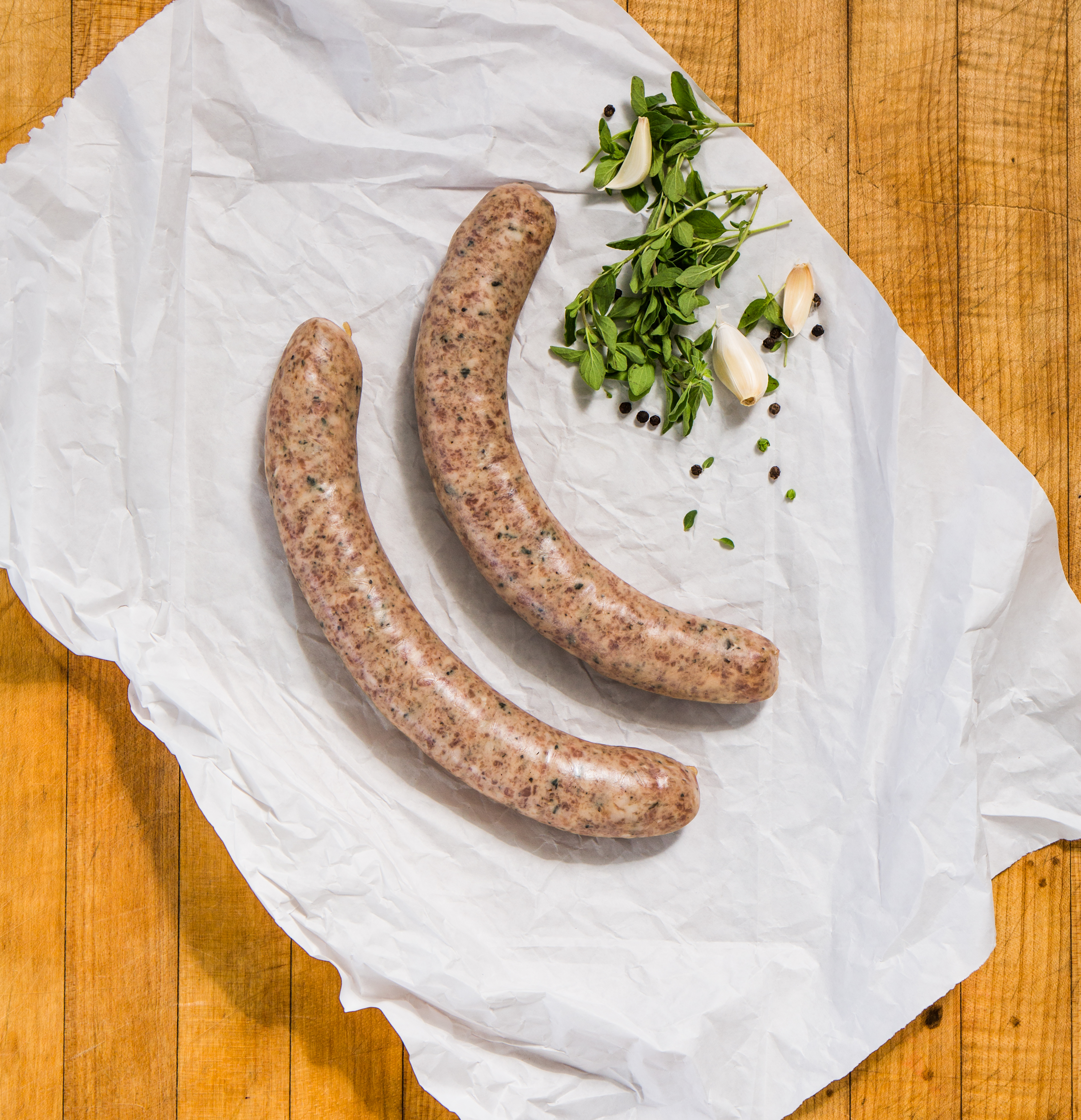
And this natural casing you speak of…
“It’s intestines. Cleaned intestines.” Peisker says. “It’s the most traditional. You clean up the intestine and then stuff it back into itself. A little horrific, but it is what it is. There are smaller casings like lamb casings and then bigger like hog casings and then really big like a beef bung. But generally, you won’t make a sausage out of that. Natural casings have a natural curve to them like a kielbasa, whereas a synthetic casing has a straight length like a hot dog. If you’re going to take a sausage and patty it and case it, you would wrap it in caul fat and that would make something called a crépinette, but that’s a very specific method. It wouldn’t be cased in the intestines, but a thin layer of fat that wraps around the intestines. What you generally see is natural pork casings. They give it a really amazing snap. But, it also makes it a little more difficult to cook than with a synthetic one or a pre-cooked one that you can just throw right on the grill.”
Natural casings are more difficult to cook?
“Natural casings need more time for the meat to slowly expand. So if you threw a fresh sausage directly on a rocking hot grill, it would explode,” Peisker says. “If you don’t let the sausage cook all the way before you char it, it will explode and burst open because the meat expands faster than the casing does. You want a slow expansion of the casing and everything staying together — that’s where you get that crazy, delicious snap from. There are a few different methods to do that.”
What’s the best way to cook them, then?
“If you’re having a bunch of people over, one of my favorite methods is to take an aluminum sheet tray or aluminum pan or a pot filled with beer and stick bratwurst in it,” Peisker says. “They’re cooking, simmering and picking up that beer flavor and when someone wants one, you can just pull it straight out of there and char it up after its boiled. You should be able to squeeze the sausage and not see a fingerprint. It should bounce back right away. Or if you’re using Italian sausage, boil them in red wine. Use something that’s going to help enhance that flavor and add something delicious. If you have Memphis sausage, which is barbecue sausage, use some cider, get a little weird with it. If you’re super boring and you want to be basic, you can use water as well. It does work.”
Any tips for other methods?
“On the stovetop, one option with natural casing is in a skillet,” Peisker says. “Slowly start to cook on low, flipping every few minutes until the sausage gets firmed up. Then just crank it at the end. But you want to make sure it’s cooked all the way, so you don’t explode your sausage. If you have a fully cooked sausage or a patty, just throw it in there, crank it up, char it and eat it. If you want to use the oven, evenly space your sausage on a rimmed baking sheet and put them in the oven as it preheats to 325°F, giving them time to expand slowly as the oven warms. If you want some extra flavor, you could blast it under the broiler for the last little bit.”
How about on the grill?
“When setting up your grill, I always advise creating two heat zones,” Peisker says. “If you’re using charcoal, you can concentrate it on one side of the grill to make a hotter zone and use the opposite side for low heat. If you’re using a gas grill, split the burners between high and low — or no — heat. Start sausage over low heat to give the natural casing time to expand, then finish over high heat to get a nice, crispy sear. That’s also a nice method if you’re cooking for a bunch of people. Once the sausages are fully cooked, you can cook your burgers, put the cheese on them, put them on the platter. Then just move over all the bratwurst, char them for a minute and then those are ready as well. So it’s back to back.”
What’s your favorite summertime sausage?
“The hot dog is my favorite summertime sausage. It is easy, simple, and delicious. I also love kielbasa as a shareable sausage,” Peisker says. “I like to grill it up when people come over, slice it, and serve it with stone-ground mustard. It is a great app. I like mustard on my hot dog and here in Chicago it is an abomination if you put ketchup on your dog, but it is 2023. You do you. You can dress your food however you want. It is yours.”
Join America's Fastest Growing Spirits Newsletter THE SPILL. Unlock all the reviews, recipes and revelry — and get 15% off award-winning La Tierra de Acre Mezcal.


